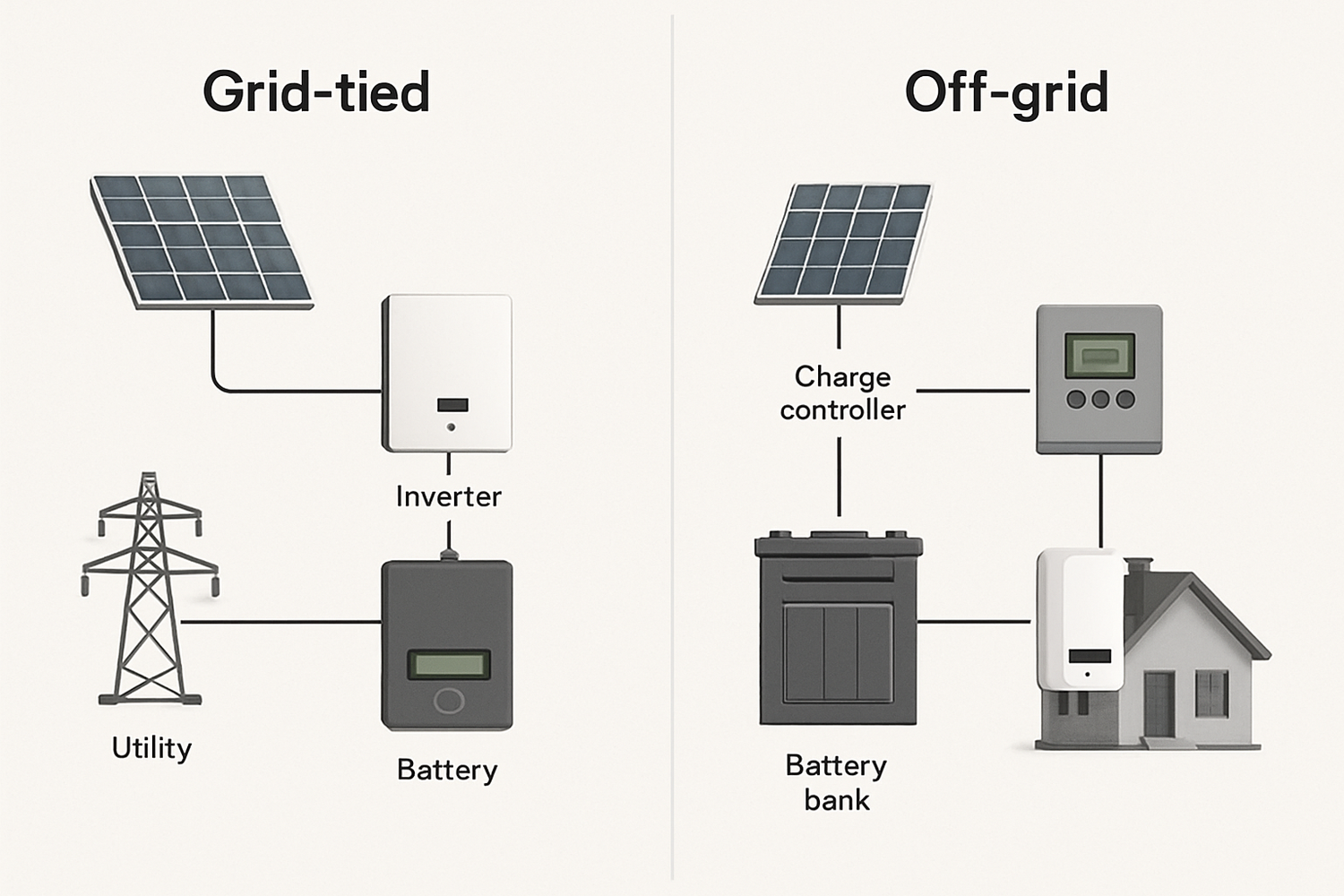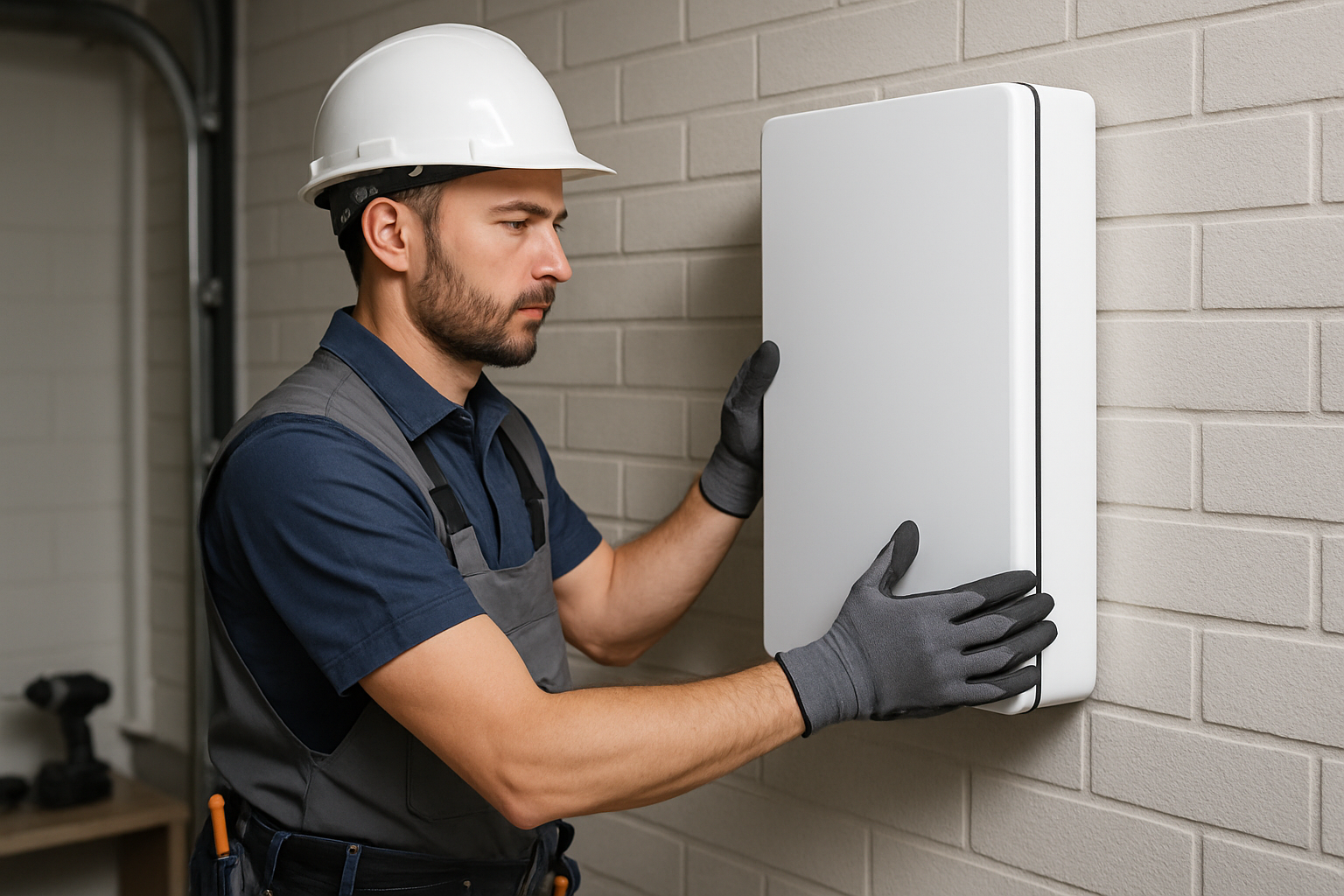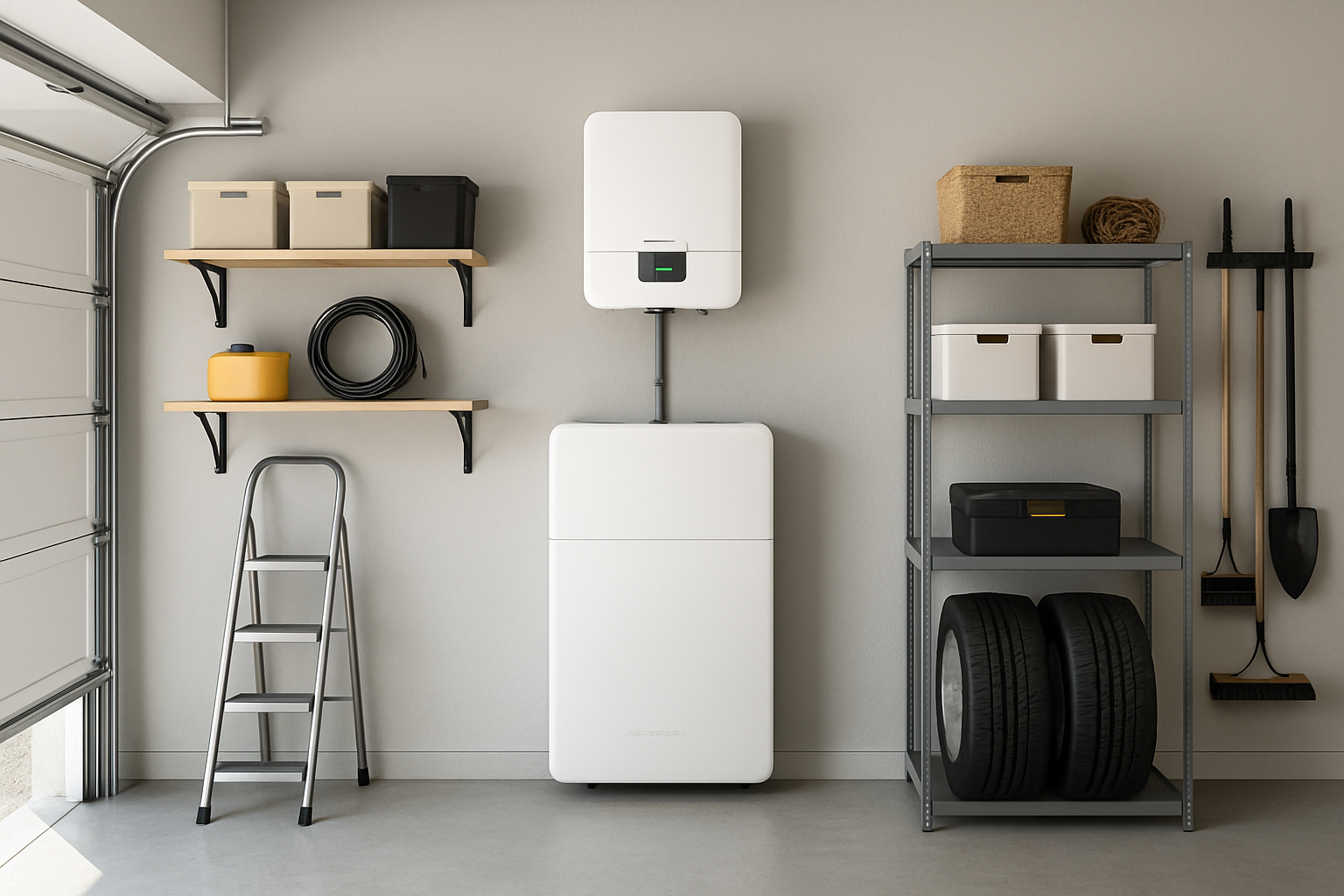Choosing to install a home battery system is a major step toward managing your energy future. The central decision you'll face is whether to remain connected to the utility grid or to become fully independent. A grid-tied battery installation offers a balance of self-sufficiency and reliability, while an off-grid setup provides complete autonomy. This choice depends on your specific goals, location, and financial plans. Understanding the requirements and benefits of each path is key to selecting the right residential energy storage solution.
Understanding Grid-Tied Battery Systems
What Is a Grid-Tied Battery Installation?
A grid-tied battery system, also known as a grid-interactive system, is connected to your local utility's electrical grid. It works in tandem with the grid, allowing you to draw power when your solar panels aren't producing enough and, in some areas, send excess energy back. The primary components include solar panels, a hybrid inverter that manages energy flow, and a battery for storage. Energy from your panels first powers your home, then charges the battery. Once the battery is full, any surplus power can be exported to the grid, often for credit on your utility bill through a process called net metering.
Key Benefits of Staying Connected
The main advantage of a grid-tied system is reliability. The utility grid acts as a massive, virtual battery, providing a seamless backup power source. This connection often allows for a smaller, more affordable initial system since you don't need to size your battery bank to cover 100% of your energy needs during periods of low solar generation. Furthermore, financial incentives like net metering can significantly reduce electricity bills by crediting you for the excess energy you contribute.
Ideal Scenarios for Grid-Tied Systems
Grid-tied systems are an excellent fit for homes in urban and suburban areas with a stable grid connection. They are perfect for homeowners whose primary goals are to lower their monthly electricity costs, have reliable backup power for outages, and take advantage of available solar incentives. If you want a balance of energy independence and security, a grid-tied battery installation is a practical and efficient choice.
Exploring Off-Grid Battery Systems
What Is an Off-Grid Battery Installation?
An off-grid battery installation means you are completely disconnected from the utility grid. Your home becomes its own self-sufficient power station, relying entirely on the energy you generate and store. This requires a robust and carefully designed system, typically including a large solar panel array, a substantial battery bank, a powerful off-grid inverter, and often a backup generator for emergencies. Every watt of electricity your home uses must be produced and managed on-site.
The Advantages of Complete Energy Independence
The most significant benefit of an off-grid system is total energy autonomy. You will have no monthly electricity bills and are completely immune to grid power outages, blackouts, or changes in utility policies. This makes off-grid systems the only viable option for remote properties, cabins, or farms where extending grid infrastructure is either impossible or prohibitively expensive. It offers true self-sufficiency and a predictable energy future.
Challenges and Considerations
Achieving complete energy independence comes with challenges. The initial cost of an off-grid system is significantly higher than a grid-tied setup because it requires a larger battery bank and solar array to meet 100% of your energy needs, even through consecutive cloudy days. System sizing is absolutely critical; underestimating your needs can lead to power shortages. Additionally, all maintenance and troubleshooting responsibilities rest solely with you, the system owner.
A Head-to-Head Comparison
Grid-Tied vs. Off-Grid: Key Differences
Making the right choice requires a clear comparison of the two installation types. While both use solar energy and batteries, their operational philosophies and requirements are fundamentally different.
| Feature | Grid-Tied Battery System | Off-Grid Battery System |
|---|---|---|
| Utility Connection | Connected to the main electrical grid | Completely standalone; no grid connection |
| Reliability | High; uses the grid as a backup | Depends entirely on system size and weather |
| Initial Cost | Lower to Moderate | High to Very High |
| System Sizing | Flexible; can be sized to offset a portion of usage | Critical; must be oversized to meet 100% of demand |
| Financial Incentives | Often eligible for net metering and other rebates | Generally ineligible for grid-related incentives |
| Maintenance | Lower; grid provides backup during maintenance | Higher; owner is fully responsible for upkeep |
| Best For | Urban/suburban homes with reliable grid access | Remote locations or full energy independence |
Essential Requirements for Your Installation
Sizing Your System Correctly
Proper system sizing is crucial for both types of installations, but it is non-negotiable for an off-grid system. The process starts by calculating your home's daily energy consumption in kilowatt-hours (kWh) and identifying your peak power demand. For an off-grid system, you must also plan for 'days of autonomy'—the number of consecutive cloudy days your battery bank can sustain your home. For a deeper look into evaluating battery performance metrics like C-rating and depth of discharge, which are vital for proper sizing, you can review this comprehensive guide on solar storage performance.
Choosing the Right Components
A residential energy storage system is only as strong as its weakest link. High-quality components are essential for safety and longevity.
- Batteries: Lithium Iron Phosphate (LiFePO4) batteries are the leading choice for home energy storage. They offer a long lifespan, high efficiency, excellent safety, and require minimal maintenance compared to older lead-acid technologies.
- Inverters: A hybrid inverter is used in grid-tied systems to manage power from the panels, battery, and grid. Off-grid systems require a powerful standalone inverter. According to a report from IRENA, Grid Codes for Renewable Powered Systems, advanced grid-forming inverters are becoming increasingly important for ensuring stability in systems with high renewable energy penetration.
- Balance of System (BOS): This includes all other necessary hardware, such as charge controllers (for off-grid), wiring, mounting racks, and monitoring systems that allow you to track your energy production and consumption.
Your Path to Energy Independence
Ultimately, the choice between a grid-tied and an off-grid battery installation hinges on your primary motivation. If your goal is to reduce electricity bills and ensure you have power during an outage while maintaining the security of a grid connection, a grid-tied system is likely the best solution. If your goal is complete self-sufficiency, or if you live in a remote area, an off-grid system is the clear path forward. As the U.S. Department of Energy notes, microgrids that combine solar and storage can significantly strengthen community resilience, demonstrating the power of localized energy systems. Whichever you choose, you are investing in a more resilient and sustainable energy future.
Disclaimer: This article is for informational purposes only and does not constitute financial or legal advice. Consult with a qualified professional installer and your local authorities to understand the specific requirements and regulations in your area.
Frequently Asked Questions
Can a grid-tied system provide power during a blackout?
Yes, but only if it includes a battery and a hybrid inverter specifically designed for backup power. Standard grid-tied systems without batteries will automatically shut down during a grid outage for safety reasons, to protect utility workers from power being sent back into the grid.
How many batteries do I need for an off-grid home?
The number of batteries depends on your daily energy consumption (kWh), the power output of your solar array, and the number of backup days (autonomy) you need to plan for. A professional energy audit is the best way to determine the precise size of the battery bank required for your home.
Is it possible to switch from a grid-tied to an off-grid system later?
While it is technically possible, it can be a complex and expensive process. It typically involves a significant upgrade to your battery bank, replacing your grid-tied inverter with a more powerful off-grid model, and potentially adding more solar panels. It is more cost-effective to plan for your long-term goals from the beginning.
What are the main maintenance tasks for an off-grid system?
Regular maintenance for an off-grid system includes inspecting battery terminals and connections, monitoring the system's performance data, cleaning solar panels to ensure maximum efficiency, and periodically testing any backup generators. Modern LiFePO4 batteries are virtually maintenance-free compared to older technologies that required fluid level checks.





Leave a comment
All comments are moderated before being published.
This site is protected by hCaptcha and the hCaptcha Privacy Policy and Terms of Service apply.